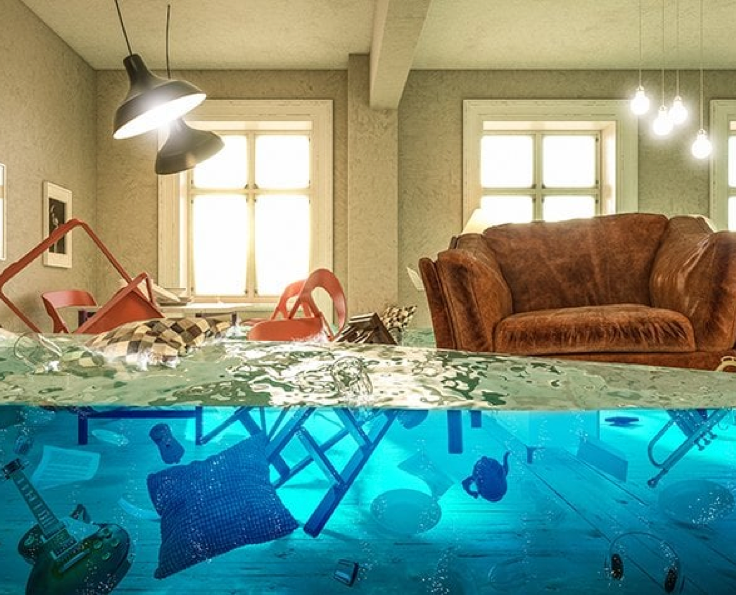Dealing with water damage in your home (and how to prevent it)
Dealing with water damage in your home (and how to prevent it)
*iSelect does not compare to all home and contents insurers in the market. The availability of policies may change from time to time. Not all policies made available from iSelect’s providers are compared by iSelect and due to commercial arrangements, area or availability, not all policies compared by iSelect will be available to all customers. See below for our range of home and contents insurers. Some policies are only available from iSelect’s call centre or online. Our advice on this website is of general nature and does not consider your situation or needs. Consider if any advice is appropriate for you before acting on it. Learn more.
Compare home and contents insurance the easy way*
Save time and effort by comparing a range of home and contents insurance policies with iSelect
What’s typically considered ‘water damage’?
What kind of water damage is covered under Home and Contents Insurance?
How to make a claim
Tips on preventing water damage
Compare Home and Contents Insurance cover
What type of damage is it? How much will this cost? And are any of those costs going to be covered by your Home and Contents Insurance? Before you end up wading through water in your living room or being drenched by a broken roof gutter, it’s best to know where you stand when it comes to water damage. We’ll take you through what’s covered, how to make a claim and tips on how to prevent it from happening in the first place.
What’s typically considered ‘water damage’?
Sudden and accidental damage is typically what insurers cover when it comes to water damage. Burst pipes, overflowing appliances, sewer backup or storm damage to household items are just some of the types of events that are generally covered.
The important thing to remember is that the water damage has to occur unexpectedly or out of the blue.
On the other hand, gradual water damage caused by poor conditions or negligence may not be covered by insurers. It’s always best to read through the Product Disclosure Statement (PDS) of any Home and Contents insurance policy before purchasing so you understand the inclusions, exclusions, and limitations.
What kind of water damage is covered under Home and Contents Insurance?
Depending on the type of cover you have, a policy is typically divided into three different kinds of water damage:
- Storm and rainwater cover (heavy rain, wind damage, earth movement)
- Escape of water cover (broken pipes, toilets, washing machines, taps and gutters)
- Flood damage (this often comes as an optional extra, so it may be worth considering if you live in a flood-prone area)
Let’s examine those first two a little more:
Typical inclusions and exclusions for storm and rainwater cover1Bupa – Home and Contents,2Budget Direct – Home and Contents ,3Moneysmart – Home Insurance,4AHM – Home Insurance
| Inclusions | Exclusions |
| Earth movement that occurs within 72 hours of a storm or heavy rain, as a result of that storm or heavy rain Surface run-off rainwater from surrounding areas that occurs within 24 hours of a storm or heavy rain The escape of rainwater from any water pipe, drain, or gutter Wind damage caused by storms or heavy rain | Flood (unless your insurer offers or provides this as an extra) Rain, hail, wind, snow, or dust that is caused by: |
Also, you typically won’t be covered for any loss or damage to the following:
- Artificial grass or turf
- Courts designed for sports with fixed surfaces (such as a hard court)
- Fences and gates that are not in good condition
- Garden borders, driveways of any length, paths, or gardens
- Jetties, wharves, and pontoons
- Retaining walls
- Water in a swimming pool or spa, and their liners and/or covers
Typical inclusions and exclusions for escape of water cover5Bupa – Home and Contents,6Budget Direct – Home and Contents ,7Moneysmart – Home Insurance,8AHM – Home Insurance
| Inclusions | Exclusions |
| Loss or damage at the insured address caused by the sudden escape of liquid. You’re also generally covered for damage from liquid that has escaped slowly over time that you couldn’t be reasonably aware of Escape of liquid from the following: | The cost of repair or replacement of the item that the water escaped from, nor the water itself such as leaking shower floor, base, walls, glass screening, doors, tiles, pipes, or grouting Loss or damage caused by the following: |
You may also be covered for reasonable costs to investigate the escape of liquid if it is causing damage to your home or contents. If you don’t know the source of the water escape, then many insurers will pay reasonable costs to locate the source (but this doesn’t typically include any burst pipe or other leak source).
How to make a claim
If you find yourself in any of the unfortunate situations mentioned above, then you may wish to investigate how you can make an insurance claim.
Once you’ve assessed (and hopefully contained) the damage, here are the next steps:
- Contact your Home and Contents insurer as soon as possible, making sure you include photos of the extent of the damage and any household items that have been affected
- Submit your claim through your insurer’s website if that’s available
- Your insurer should then be in contact for a home visit to assess the damage
- Wait for the outcome of the claim, which can take anywhere from 24 hours to 10 business days
- If your claim is approved, your insurer may contact you to make some arrangements for repairs, replacing damaged goods, or reimbursing you to complete these tasks yourself. This can vary between insurers.
Tips on preventing water damage
Keep a close eye on your gutters
Some roof gutters can deteriorate and allow rainwater to seep through. Installing strong gutters could limit the amount of dirt, debris and bugs that typically build up over time.
Even if you notice a small leak, think about getting some sealant onto it or calling a plumber before it could become a real problem.
Be careful where you plant your plants
Tree roots can be the main cause of blockage when it comes to your pipes. Your garden beds and plants require a lot of water so it’s best to keep them far away from the house as possible.9Plant smart to protect your pipes – Urban Utilities
A good rule of (green) thumb is figuring out the maximum height of your trees – that’s the same distance you should have in the ground for its roots.
The inside of your home also needs protection
Knowing your home inside and out is a good way to keep it safe. Do you know where your main water valve is for when it needs to be turned off? Either at the back of a house or on the ground floor of an apartment building is a good place to start looking.
While you’re at it, have a think about investigating the plumbing around your sinks and basins to make sure there aren’t any leaks or cracks. The same goes for your bath, shower and hot water systems.
Compare Home and Contents Insurance cover
Now that you know a little more about the effects of (and safeguards against) water damage, you can start comparing from a range of Home and Contents insurers. That’s where we can help!
Save time and effort by comparing our range of Home and Contents Insurance policies with iSelect.*

.svg)






